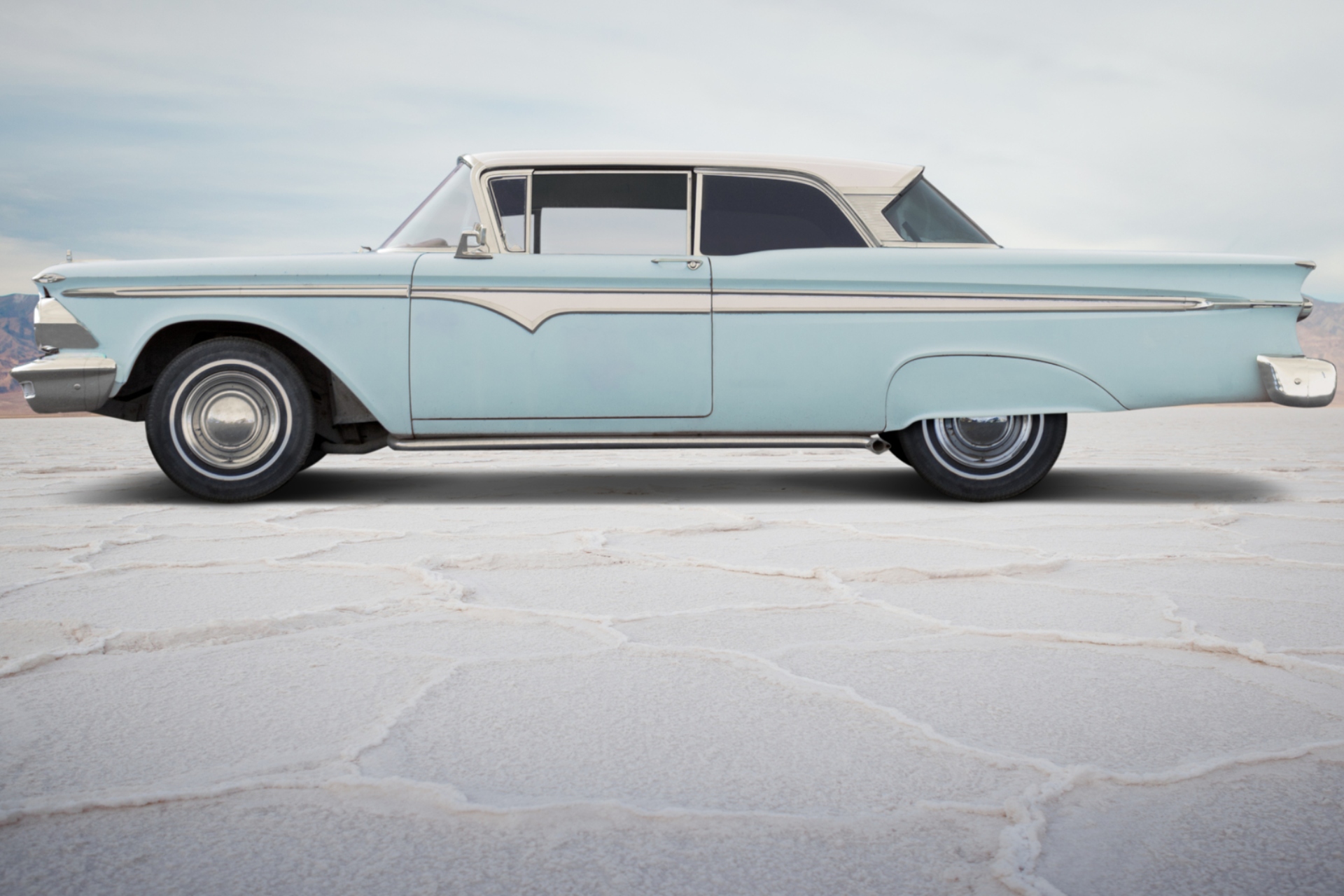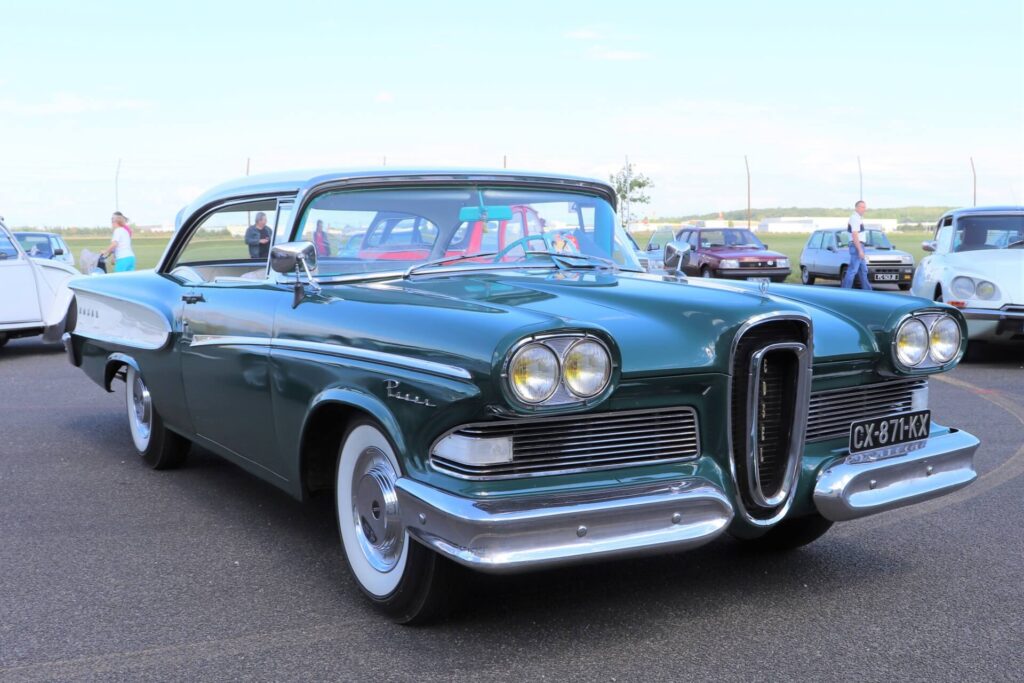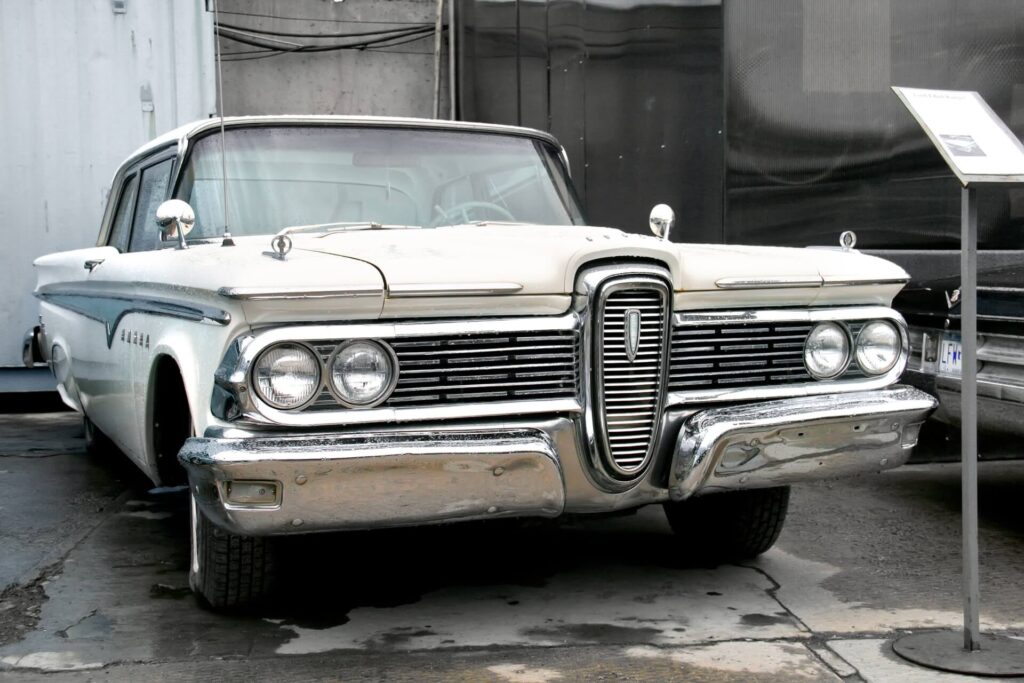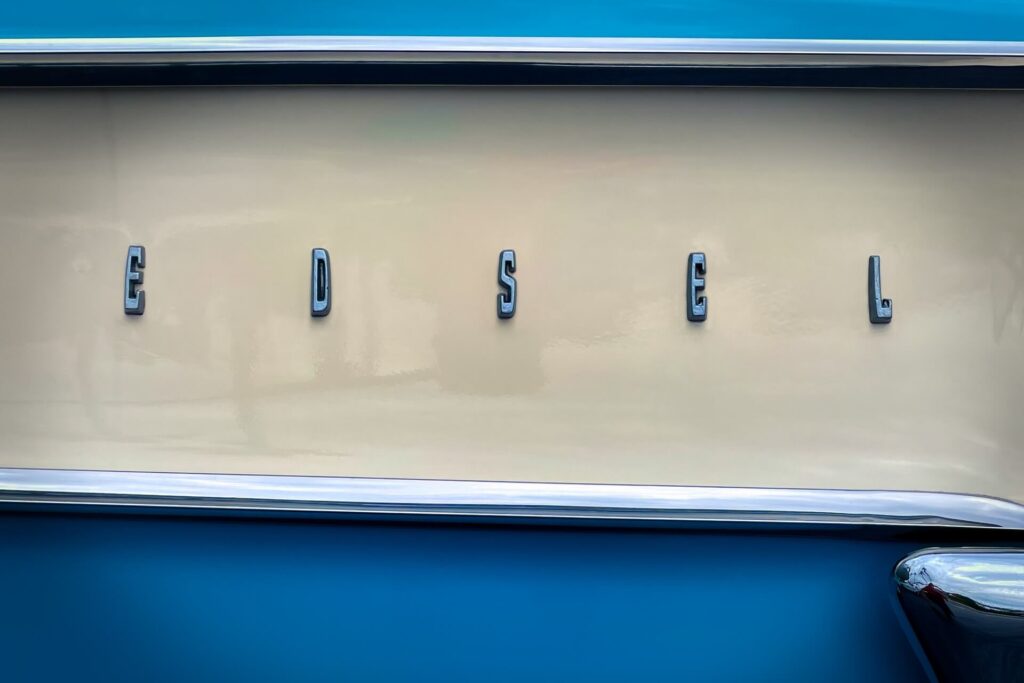Driven Out of Business: Edsel
May 26, 2023

As an Amazon Associate, Modded gets commissions for purchases made through links in this post.
The Edsel is a small piece of automotive history that Ford would like everyone to forget. It was only available to the public from 1957 to 1960, but it lost about $250 million in that timeframe and $350 million overall.
It was once dubbed “the car of the future,” but people remember it as a colossal failure to this day. What caused Edsel to flop when Ford was on top of the world? Let’s take a closer look.
Uninspiring Designs
The Edsel wasn’t just one vehicle but a new division that was supposed to exceed the success of Ford’s other divisions, Mercury, Lincoln and Continental. The first generation of Edsel vehicles consisted of four styles — the low-trim Ranger and Pacer and the luxury sedans Citation and Corsair.
In hindsight, it’s easy to see why the Edsel line was destined to fail. Each car’s appearance left a lot to be desired. All four models adopted the popular “forward look,” with roof lines, tail fins and aircraft-like proportions. The forward look was a brief car design trend in the early 1950s, drawing inspiration from World War II fighter jets.
Upon Edsel’s release in 1955, people compared the enormous vertical grilles to horse collars, toilet seats and the vivid imagery of an Oldsmobile sucking a lemon. These criticisms led Ford to switch to a horizontal grille, which closely resembled other new vehicles at the time. This reactionary strategy would become a running theme. Edsel was constantly playing catchup with other competing models.

Performance Issues
Aside from the unattractive design, the Edsel division experienced several performance issues. Owners reported power steering failures, trunk leaks, bad welds and engine overheating. The engine itself performed well enough, but the vertical grilles from the first models didn’t provide enough airflow to keep the engine cool.
The Edsel line also introduced several automotive technologies, including the Teletouch automatic transmission shifter. The shifter was almost impossible to repair because the control wires were too close to the exhaust system. There were some bright spots in the interior, such as the innovative rolling dome speedometer, warning lights and parking brake, but they weren’t enough to compensate for Edsel’s many weak points.
On top of it all, some car dealers reported getting unfinished Edsel deliveries. Vehicles would come with individual parts stuffed in the trunk instead of attached to their assigned places. It seemed like Ford’s executives had gotten ahead of themselves.

Poor Marketing Strategies
Ford was clearly intent on making Edsel the crown jewel of the automobile industry. Marketers called it “the car of the future” and created as much hype as possible for “E Day,” the day of Edsel’s official unveiling on Sept. 4, 1957. How could any car, let alone Edsel’s faulty vehicles, live up to these lofty expectations?
The Edsel line even had its own TV show for a brief period, simply called “The Edsel Show.” It did a good job of publicizing the different models and earned an Emmy nomination in 1957, but it did nothing to improve sales.
Even the name itself, Edsel, was too ambitious. Ford originally wanted to call the new division “E Car,” which was short for experimental car. Executives instead decided to name the cars in honor of Henry Ford’s son Edsel, who died in 1943. This seemingly small decision put more pressure on the company to live up to the Ford name.
Terrible Timing
If you asked today’s Ford executives why the Edsel failed, they would tell you that it was 100% the fault of the brief and debilitating Eisenhower Recession that started in 1958. Although the recession wasn’t the only reason, it certainly played a huge role in Edsel’s downfall.
Sudden price increases put the brand-new Edsel vehicles out of many people’s budgets at the time. They started at $2,500 and spiked to $3,800 during the recession, which was more expensive than other Ford models and emerging vehicles like the Volkswagen Beetle. It made no sense to buy an ugly, unreliable Edsel at such a high price.
Once the eight-month recession did its damage, Ford decided to scrap the Edsel division for good. The recession also caused five other upscale automotive companies — DeSoto, Hudson, Studebaker, Nash and Packard — to go bankrupt. So, although Ford is primarily to blame for Edsel’s failure, the company was also a victim of terrible timing.
A Stain on Ford’s Legacy
Ford has managed to maintain a solid public image after over 100 years of service, but the Edsel debacle is a stain on the company’s legacy. The design and performance of the vehicles were not up to standard, the marketing was too ambitious and economic troubles were the nail in the coffin. Still, Ford can at least say it fully recovered from the losses.







